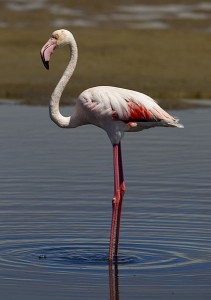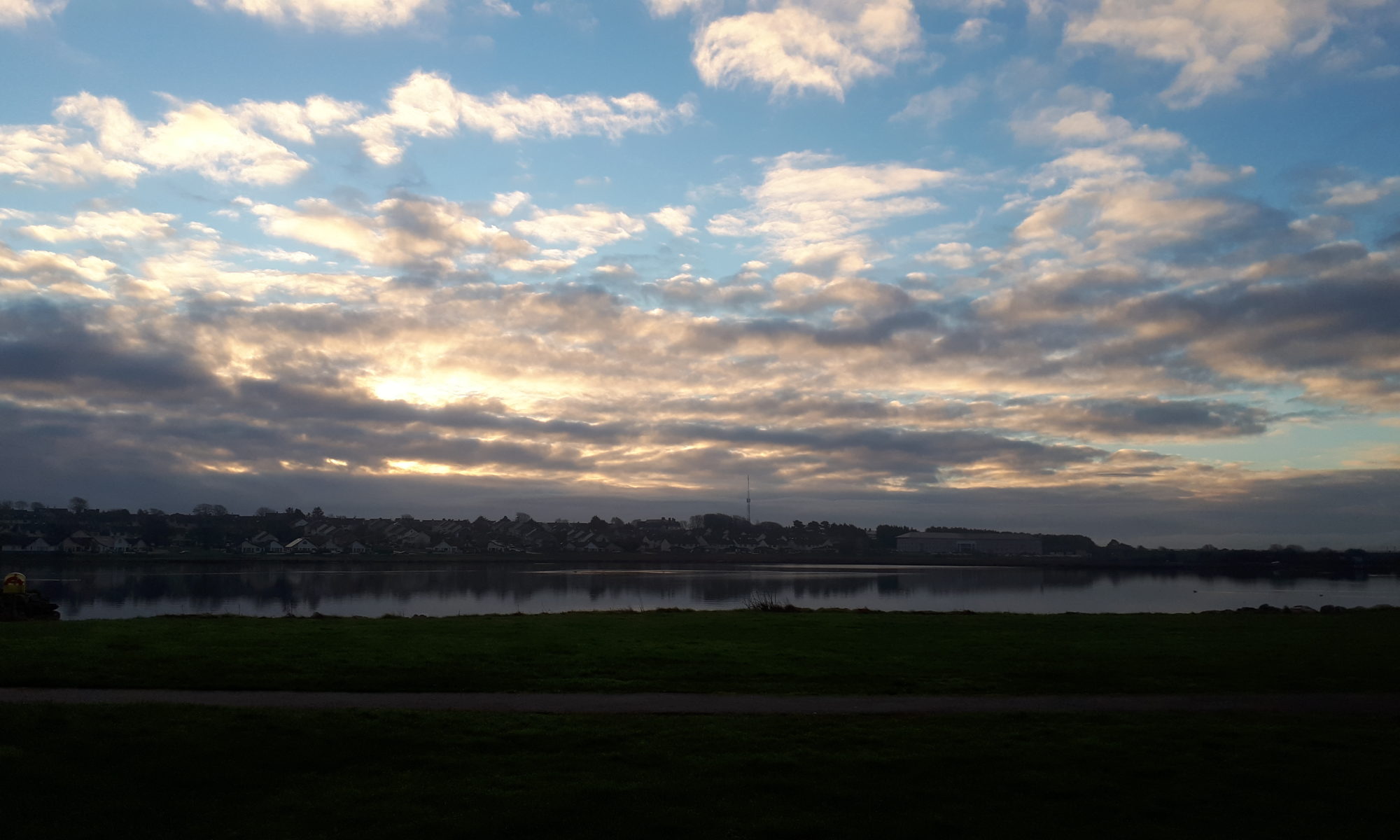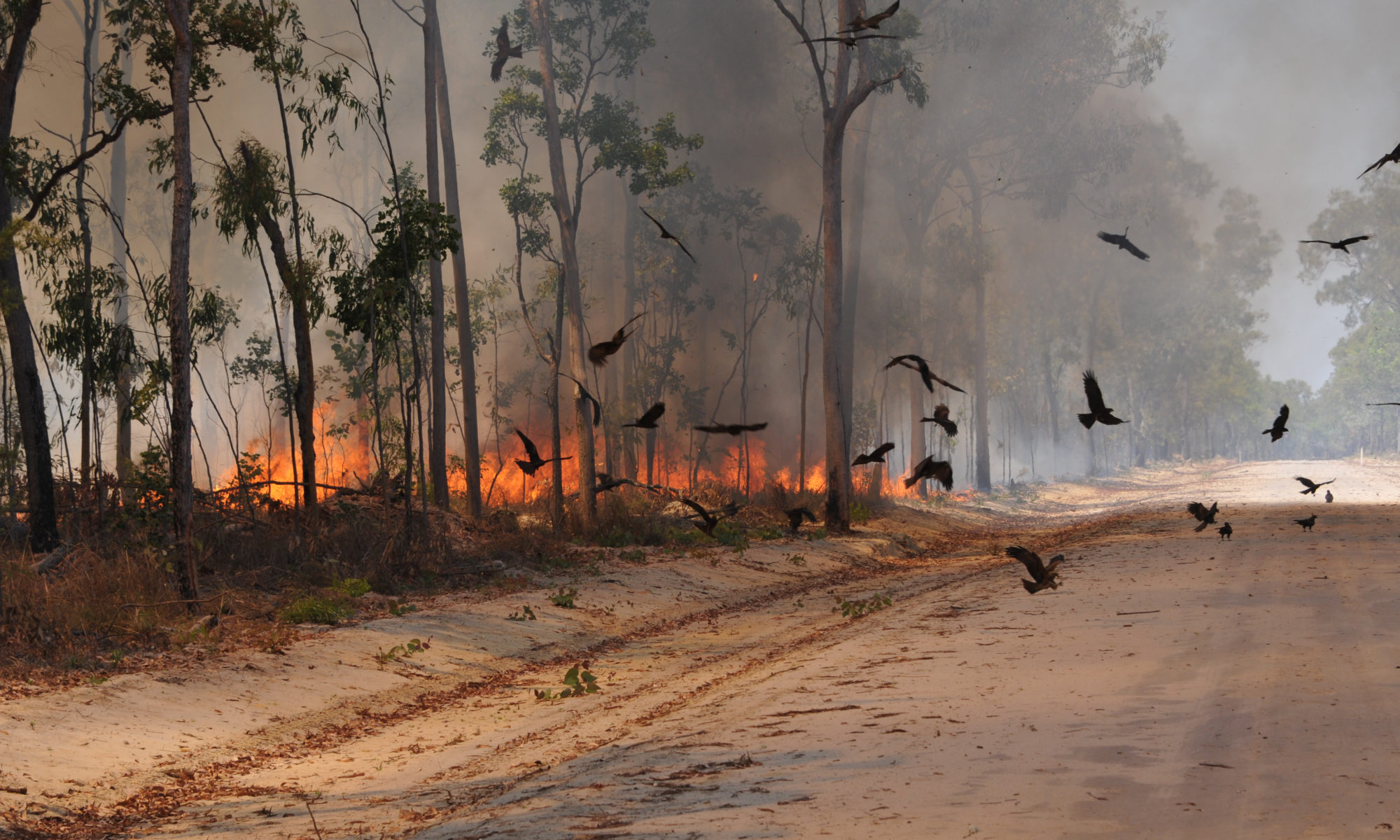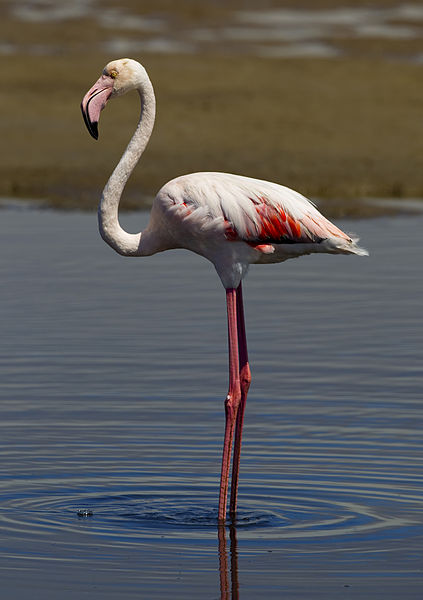My first trip to Galway was eventful. A large delegation from TCD descended on Galway for the Irish Ecological Association’s ecology and evolution conference. Several PhD students, postdocs and professors from Trinity spoke about their research in short talks of either 5 or 10 minutes.
Continue reading “Trinity Descends on Galway”Firehawks: waking up to stories of the Dreamtime
Fire is an essential part of the ecology of many savannah and grassland ecosystems. In some cases, fire is the only way of removing older grasses that are no longer profitable for herbivores to consume. As well as having benefits for local ecology, grassland fires also offer great feeding opportunities. I have seen large groups of raptors and insectivorous birds gather at the fringes of bushfires in Kruger National Park, to take advantage of the animals flushed into the open by the moving fire front. In Australia, a number of raptors are frequently seen around bushfires. These birds; black kites (Milvus migrans), whistling kites (Haliastur sphenurus), and brown falcons (Falco berigora) are known as firehawks. In Malamalak, an Aboriginal language, the black kite is known as Kerrk, a reference to its call “kerrk-kerrk-kerrk“.There is an intriguing story about Kerrk:
“In the creation period or dreamtime, Kerrk stole fire sticks from the Dingo, so that he could cook the Cheeky yam. Kerrk is still attracted to fires and occasionally he can be seen carrying burning sticks from an existing fire to start more fires further away.” Continue reading “Firehawks: waking up to stories of the Dreamtime”
School of Natural Sciences Postgraduate Symposium: Part 2/4

On the 15th and 16th April we had one of my favourite events at Trinity College Dublin: the annual School of Natural Sciences Postgraduate Symposium. Over the course of two days many of our PhD students presented their work to the School. We also had two amazing plenary talks from Dr Nick Isaac (CEH) and Professor Jennifer McElwain (UCD). For those of you who are interested in exactly what we work on here at EcoEvo@TCD, here are the abstracts from the PhD student presentations. Check out the TCD website for more details! Continue reading “School of Natural Sciences Postgraduate Symposium: Part 2/4”



